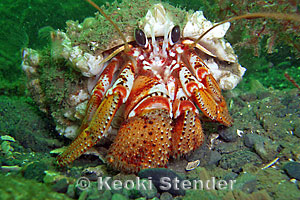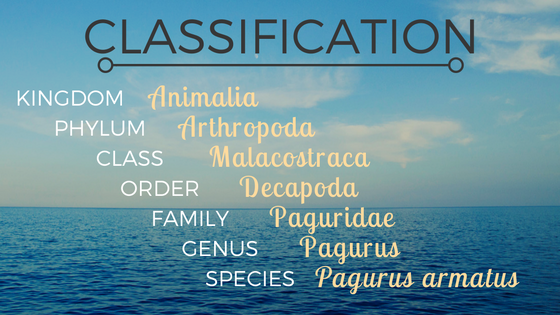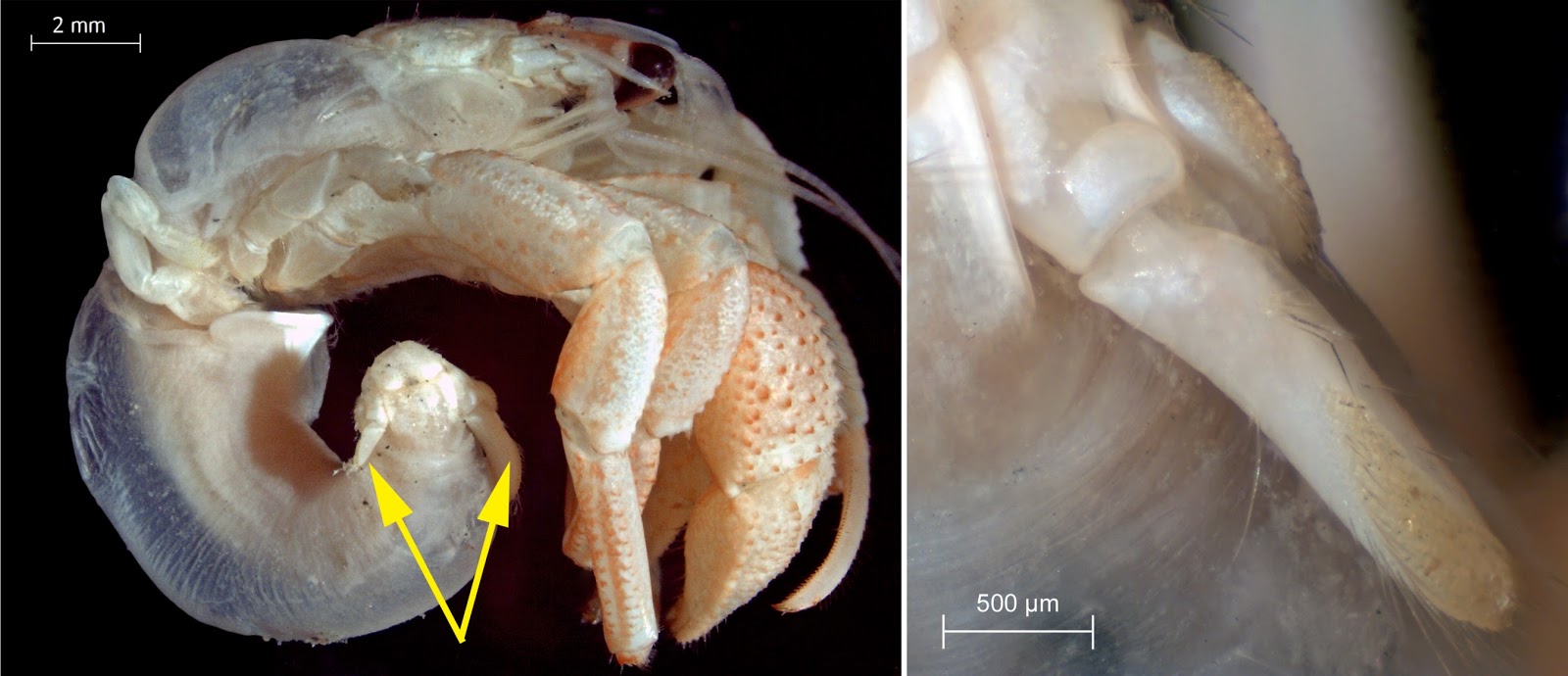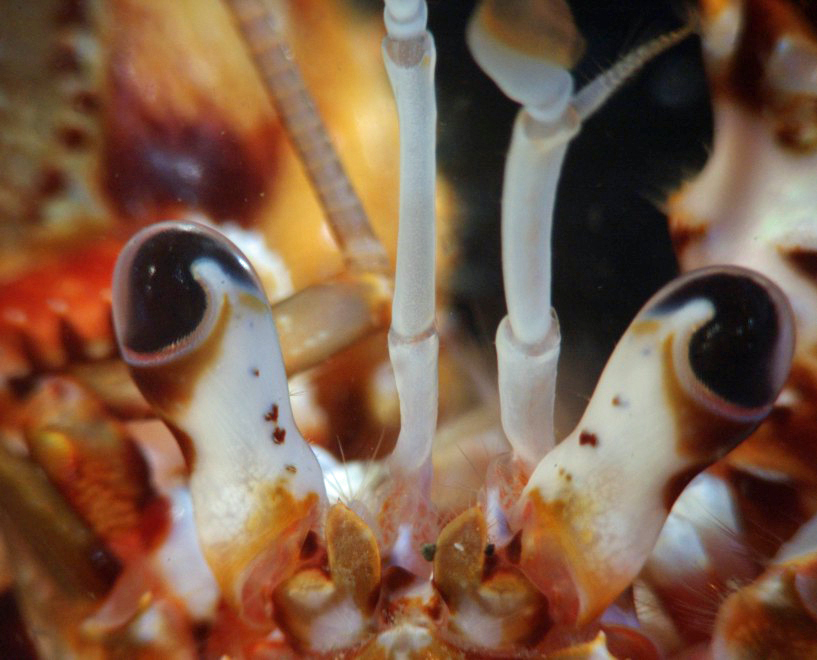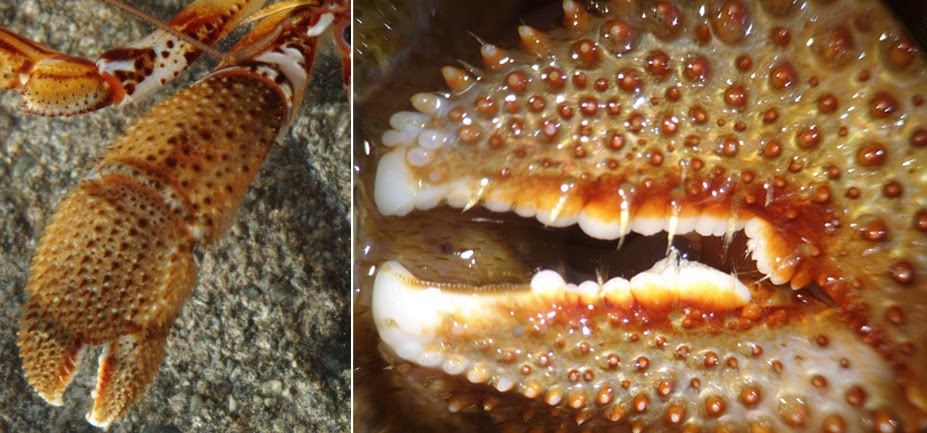A black-eyed hermit crab peers out from its moon snail home near Victoria, British Columbia. Photo courtesy of Keoki Stender.
Home is where the shell is
Like most hermit crabs, the black-eyed hermit is never far from home. The crab’s body is soft and fragile, so it seeks protection from predators inside an empty snail shell. If the crab feels threatened, it can retract its entire body into the shell, leaving only its not-so-tasty claws exposed.
Hermit crabs carry their shell homes around with them wherever they go, which might seem tricky given the size and weight of these portable dwellings. However, the coiled hermit crab body shape is perfectly designed to fit into a “mobile home.” In addition, the crab has structures near its tail called uropods (shown in the photos below). The hook-like uropods grasp the inside of the shell, holding it in place as the crab crawls along.
Moving on up
The black-eyed hermit is one of the largest hermit crabs in Puget Sound (with a body-shell length of about 4.5 cm) so it prefers to reside in a nice roomy moon snail shell. As the hermit crab grows, its borrowed shell stays the same size, so it will eventually outgrow its home and upgrade to something with a larger floor plan. When free shells are scarce, the crab may try to “evict” one of its neighbors, forcing the other crab to pack its bags and move out. Left: Side view of a preserved black-eyed hermit specimen; the arrows indicates the hook-like uropods. Right: Close-up of a uropod.
Easy on the eyes
A close-up dorsal
Love is a battlefield
Another feature that sets the black-eyed hermit apart is its distinct claws or chelipeds which have large spines on the dorsal (top) surface and smooth undersides. Like other hermits in the family Paguridae, its chelipeds are unequal in size — the right is slightly heftier than the left. Left: The spiny cheliped
These large claws come in handy when the male black-eyed hermit is looking for love. First, he finds a female crab and grabs her by the shell. He then carries her around with him for up to several days until she is ready to mate, fending off other males with his claws.
Critter of the Month
Our benthic taxonomists, Dany and Angela, are scientists who identify and count the benthic (sediment-dwelling) organisms in our samples as part of our Marine Sediment Monitoring Program. We track the numbers and types of species we see in order to understand the health of Puget Sound and detect changes over time.
Dany and Angela share their discoveries by bringing us a Benthic Critter of the Month. These posts will give you a peek into the life of Puget Sound’s least-known inhabitants. We’ll share details on identification, habitat, life history, and the role each critter plays in the sediment community. Can't get enough benthos? See photos from our Eyes Under Puget Sound collection on Flickr.


